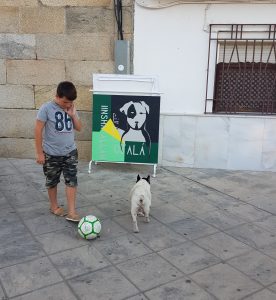
The artists at Airgentum organized a pop up exhibition of our work. We wanted to share what we made with the local community and had lots of fun in the process.
Participating artists:
Jennifer Pickering
Shazia Ahmad
Riley Strom
Vitalii Khoma
Caroline Deschene
Wendy Deschene
Jeffrey Schmuki
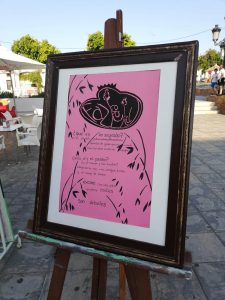
This piece is a collaboration between Rosa Aphalo, a writer who is interning with Airgentum, and myself. She wrote the poetry to go along with prints I made of the “Camino de Fazcardiel” mural.
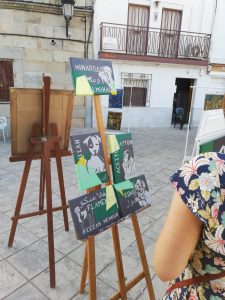
My paintings from the Armonía project
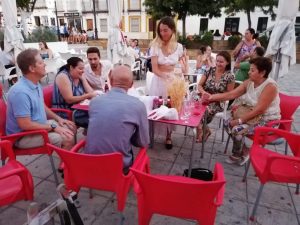
We had a very fun time sharing our work in the public square while enjoying some refreshments with new friends.
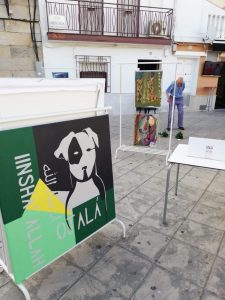
The exhibition was dynamic and we were able to move the works around over the course of the evening. Painting from my Armonía project.

Shazia Ahmad, from Montreal and Pakistan, and I with a painting I made of Raven and Robilargo (Cyanopica/Magpie).
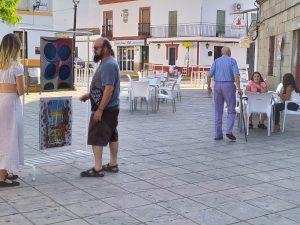
Koco (with the beard) organized the pop up exhibition. He lives in Castilblanco and make it possible for us to put the show together. On his left is Riley, an American artist along with her abstract paintings.
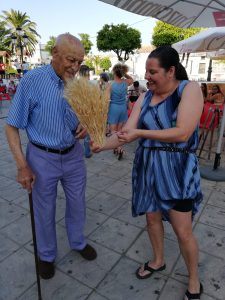
Wendy, Canadian artist, with her and her partner Jeff’s work Monsantra. Little robot plants to help instigate conversation on environmental issues.
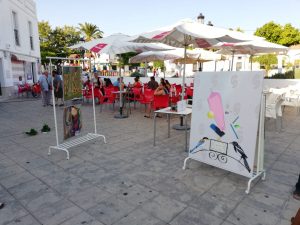
The Plaza Amarillo, where we exhibited our work on the last night of the residency. A great farewell!
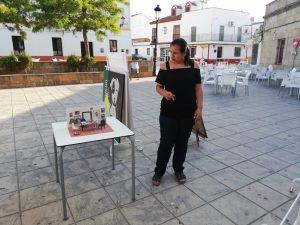
Shazia, artist from Pakistan/Canada, next to her diorama. She made a fun model of the residency seating area.
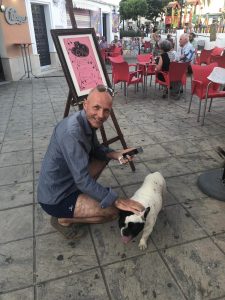
This is Vitalii Khoma, an artist from the Ukraine.
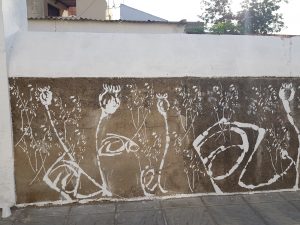
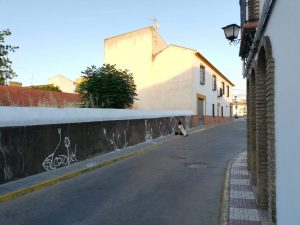
Painting the long wall.
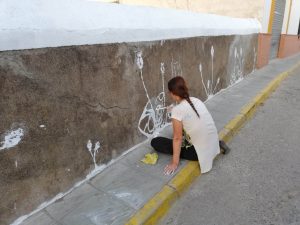
Me, painting…
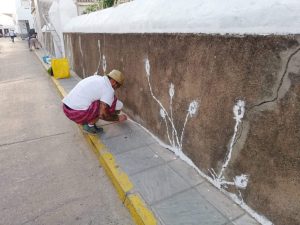
Samuel, a Mexican artist, collaborating on the wall.
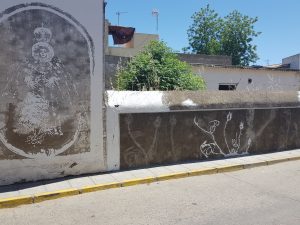
Work in progress.
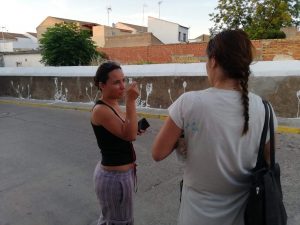
Discussing with Martina, the residency manager.
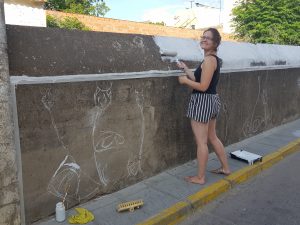
Rosa, the residency intern, painting the top of the wall.
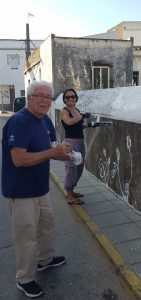
Martina and José Luis painting the borders.
Exhibition Opening: وئام او انسجام armonía
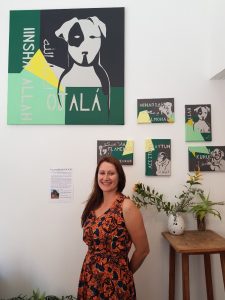
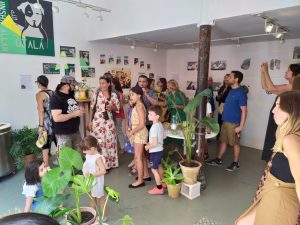
Exhibition Opening
We had an excellent turn out for the exhibition yesterday including some great conversations. The works on display were created during the Airgentum residency. Many thanks for Martina Durendez, director of Airgentum, for her hospitality and dedication to organizing and promoting our works. Also special thanks to Juan Carlos Romero Marquez for writing about the show and to all those who came out to view the exhibition.
Why Dogs?
During the opening I had a few questions about the dogs. What I wrote in my artist statement was that the dogs are guardians and shepherds and I used them to represent this same force towards the preservation of culture and identity, outside of political and social agendas.

Shepherd dog from la Dehesa
However, I must confess that they are also a bit cynical when I think about how an artist might make their career as a painter. Often this is by painting portraits of peoples’ dogs. Aside from my own observations, one of the other artists in the show told me that a few of her recently graduated students were doing just that to make their living. Another told me about a gallery where most of the works sold were of dogs, despite having a range of thoughtfully curated artworks.
I was thinking about the practice of painting in contemporary society and how the dogs could also be a way to get peoples’ attention. I wanted something that people could easily connect with.
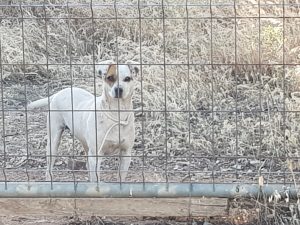
Guard dog of Sierra Norte
When formulating my ideas I was also thinking about an intervention by Banksy, which I think is really ingenious (also cynical). He painted an image of a kitten on the side of a destroyed building in Palestine. He writes: “A local man came up and said ‘Please – what does this mean?’ I explained I wanted to highlight the destruction in Gaza by posting photos on my website – but on the internet people only look at pictures of kittens.”
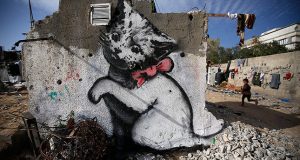
Banksy, Kitten in Gaza Strip
Dogs and Cultural Difference
Finally, one of my new friends was asking me about what my plans were to show the work in the future. He was concerned that I shouldn’t bring it back with me to Saudi. This is because in the Muslim world dogs are considered to be unclean and dirty and it is thought that they shouldn’t be kept inside as pets. I hadn’t considered this as the work was created for an Andalousian audience. I will try to find a home for the work here when I leave so that it can maintain it’s specific cultural associations. Understanding differences, finding commonalities, beliefs and customs that separate and those, which join us…
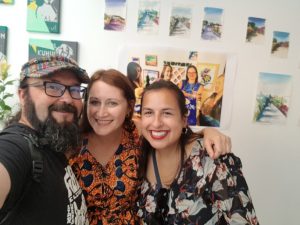
With new friends, Coco and Shazia
Airgentum Exhibition

Tomorrow I will be showing new paintings made during my Airgentum residency. The group show will be held in Sevilla at LITTLE estudio on Saturday June 22 starting at 1pm.
ABOUT MY WORK: Armonía وئام او انسجام
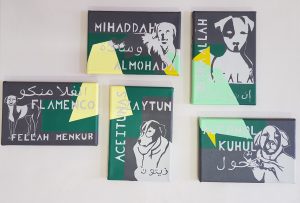
I have been living in the Middle east for the past five years. I moved with the hope of gaining a better understanding of the region and its people. From home, what I heard daily from the media was a frightening story of a dangerous place. As we know, the media often plays an important role in supporting political and social ideologies. I am immensely grateful for the opportunity to get to know so many wonderful people and cultures that are different than my own, yet similar in so many fundamental ways. People, who value hospitality, culture, family, security, diversity and community.
Coming to Andalusia to work, I knew there existed a long and important influence from the Arab world. This is visible in the architecture throughout the city of Sevilla. Of surprise to me was the Arabic influence on the spoken language.
In this work I use the dogs of Sierra Norte to draw attention to this intersection of cultures within language. I cut and layer images, shapes and words to draw attention to the places where East and West become so entangled that the influence of one on the other has been either forgotten, ignored or purposefully diverted. For me the dogs who guard and shepherd in the countryside, represent a force needed to guard and guide our understanding of both our own and the culture of others. By knowing how close we are, in a climate that creates power and control thorough difference and fear, we can build the understanding needed for peace and security.
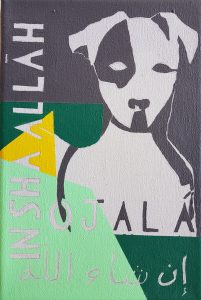
News Article: RELATOSEVILLA.COM
Estudio Nómada: Mas Els Igols Artist Residency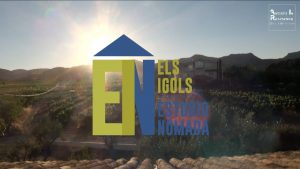
I’ve just received an invitation to participate in a residency in Spain, in la Berna (Torrelles de Foix) located 60 Kilometers from Barcelona city. The residency will run for 2 months starting June 1st. My proposal is to produce a body of work based on my experience working in the Middle East over the past 4 years. In my work I intend to explore the dynamics of cultural exchange from a personal level that suggests the Muslim world as it has been presented to the west is not as it is largely believed to be.
Art Hub Liwa
I was invited to live and work in Liwa for one month during the Al Dhafra Camel Festival, as an opportunity to learn about the relationship between the Bedouin and the camel and create paintings on this theme.This residency, organized by Art Hub, the first artist community to be established in the United Arab Emirates.
There were 25 artists from 11 nations who participated in the residency. We spent our first ten days attending the camel festival where we went to a camel beauty competition, camel races and a traditional souk. We were also invited as guests to the Mazrouei international camp. It was at this camp where, sitting around a fire in the desert, I learned that the UAE would not exist today were it not for the camel.
For my part, I wanted to show the integral relationship between the land that is now the UAE and the camel. I used the camel to design a pattern, which pieced together forms the body of this desert land. The title for my painting, “describe to me the desert” is from a poem by the late Emirate poet, Ahmad Rashid Thani.
Which wave/ They describe to me the desert/ And forget the grain of sand/ In a wave that still runs by the sea/ They describe my many steps/ On the shore/ While the sea does not know/ In which wave it had drowned
In the past, the Bedouin peoples’ survival depended on the camel. Camels can regulate their body temperature, go without food or water for long periods and provide milk, which made it possible for the Bedouin to travel across the desert. For instance, moving from the date palms gardens in Liwa in the fall and winter to the Gulf for pearling during the summer months. That is why the Emirate people honour the important role the camel played in their history with festivals such as Al Dhafra. Without the camel, their ancestors wouldn’t have survived here and their descendants wouldn’t be enjoying the prosperity they now share.
Media: Gulf News, 11/02/15
‘Vieraat’ Arteles Open Studios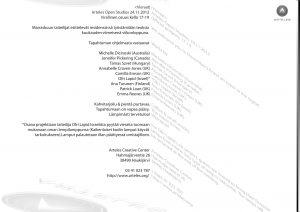
Open Studio
On November 24, I presented the Mars Café during the Arteles Creative Centre Open Studios. The name of the show, Vierrat, is a word that means both stranger and guest in Finnish and was very fitting to us as residents and to many of our works. Here is a link to a short video documentation of the show: link
For this show I edited a video to represent a circular cutting through the coffee table, down to the centre of the earth, out the other side and up through space to the surface of Mars. The video includes images from the room, satellite imagery and the textures and colours of the rocks that form the local geology.
The opening wasn’t the right situation to initiate a conversation so I organized this a few days later. The other resident artists, Annabelle’s boyfriend Tom and Teemu and Katru from Arteles joined the discussion. Among the topics discussed were environmental, political and technological developments. We also spoke about how the ways in which we live socially are changing, some failed experiments in communal living and how much we enjoyed and benefited by sharing the cooking as a group. As part of the Café I also learnt how to bake Korvapuustit and Karjalanpiirakka, a traditional Finnish dessert and a bread. This turned out to be a great way learn a little about the culture while encouraging people to come together and share ideas.